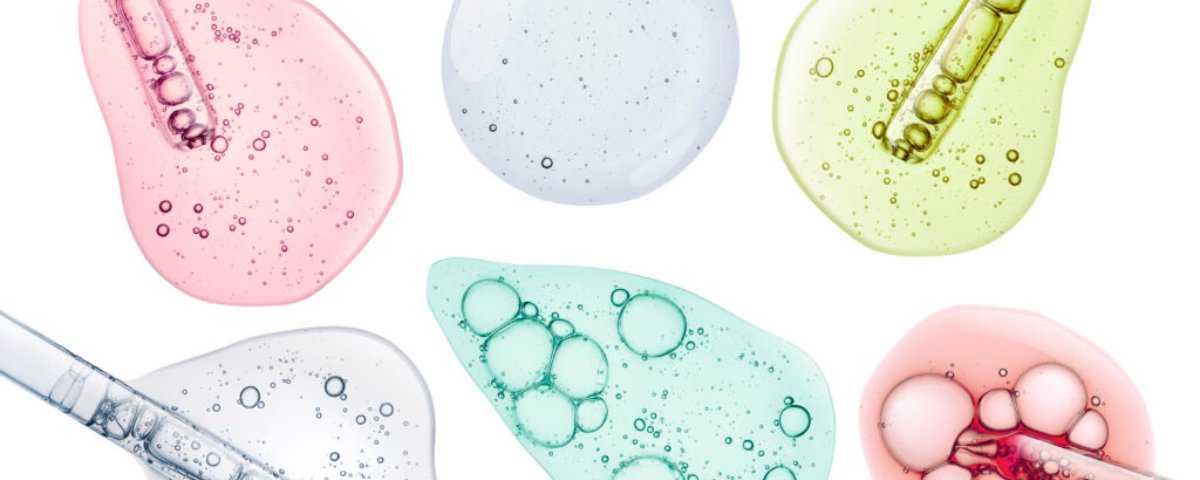Cosmetic science is in constant evolution, driven by the incessant search for products that not only beautify but also take care of skin health.
Recent innovations in this field testify to the marriage between beauty and science, where new technologies and ingredients are defining the future of personal care.
Before addressing the new technological concepts that we believe will be the foundations for some truly innovative products to come, it is important to understand that we are now experiencing a revolution in the concept and standards of beauty. What the future offers us on this topic will strongly alter how we create cosmetic products.
Diversity, inclusion, and sustainability are largely responsible for the profound and consistent changes in the cosmetic market, and the quest for purpose and social responsibility is aided by a powerful ally: science. Here, we will outline some technological paths we can utilize to meet future challenges.
#### Peptides: The Skin’s Messengers
Peptides are short chains of amino acids that act as biological messengers, stimulating the skin to perform specific functions like producing collagen and elastin. These substances are essential for maintaining firm and elastic skin.
With biotechnology, it is possible to create synthetic peptides that mimic these natural processes, offering anti-aging and reparative results with proven efficacy. Cyclic peptides represent a promising innovation in the field of cosmetic formulations, offering significant benefits in terms of stability and efficacy. These molecules, characterized by their ring structure, can penetrate deeper into the skin due to their reduced size and compact form. This allows them to act directly on target cells, improving hydration, reducing roughness and coarseness, and promoting a smoother skin texture.
Additionally, cyclic peptides are highly stable in cosmetic formulations, resisting enzymatic degradation and maintaining their activity for longer periods.
#### Fermentation: Natural Power
Fermentation is an ancient technique that has gained traction in cosmetic research laboratories. Through this process, natural ingredients are transformed by microorganisms, resulting in compounds with antioxidant, moisturizing, and regenerative properties. Fermented products are more easily absorbed by the skin, enhancing their beneficial effects and being sustainable. Some traditionally synthetic fragrances can be produced by yeasts.
The fermentation process of plant raw materials in their matrix of biologically active compounds and cosmetic properties increases the bioavailability and activity of biologically active compounds. During the fermentation process, complex compound structures are converted into simpler forms, translating into greater efficiency and bioavailability due to epidermal compatibility and skin penetration. Bioferments also help improve the natural balance of the skin microbiome, which is disrupted by external factors, and this is linked to healthy skin. Biotechnology is also enabling the creation of biocosmetics that use ingredients produced through biological processes like fermentation. These ingredients are often more sustainable and can be more effective than their synthetic counterparts.
#### Customization Through Synthetic Biology
Synthetic biology seeks to create biological systems to develop functions in living organisms artificially, using knowledge of advanced engineering and computing; the field has implications in various industries, from biofuel production to personalized medicine. It is possible to manufacture isolated silk or spider web proteins for medicinal or cosmetic use. Synthetic biology can also allow for the creation of personalized cosmetic ingredients at the genetic level. Imagine products that adapt in real-time to changes in the skin, such as climate or hormonal variations.
#### Nanoparticles: Precision on a Microscopic Scale
Nanoparticles represent a significant advancement in the targeted delivery of active ingredients. With their reduced size, they penetrate the deeper layers of the skin, releasing the actives in a controlled manner and increasing the efficacy of the products.
Cubosomes are nanoparticles capable of encapsulating hydrophobic or hydrophilic molecules in their structure, containing approximately 50% hydrophilic and hydrophobic areas, allowing them to encapsulate more molecules than liposomes. Particularly, cubosomes are easy to produce due to their raw materials being lipids (monoglycerides (GMO) or phytantriol (PHY)) that self-associate in aqueous media.
Another promising nanoparticle for the future of cosmetic science is Nanotubes or Fullerenes. Fullerenes are an allotropic form of carbon, the third most stable after diamond and graphite. They have become popular among chemists for their structural beauty and versatility in synthesizing new chemical compounds and specific physical and chemical properties. Studies reveal that these structures could become excellent carriers for transporting actives directly to specific tissues or cells.
Water-in-Water Emulsions: New Sensory Experiences
The water-in-water (W/W) emulsion is a system consisting of a discontinuous phase of molecules dissolved in water in another continuous phase of aqueous solution; both the discontinuous and continuous phases contain different molecules that are fully water-soluble. Thus, when two entirely aqueous solutions containing different water-soluble molecules are mixed, droplets of water predominantly containing one component are dispersed in an aqueous solution containing another component.
Recently, it has been demonstrated that such a water-in-water emulsion is stable due to the coalescence of different types of non-amphiphilic but water-soluble molecular interactions. These molecular interactions include hydrogen bonds, salt bridges, or the so-called Pickering emulsions obtained from organic or inorganic particles that replace traditional emulsifiers. This new cosmetic form can offer different organoleptic and sensory characteristics.
Other Innovations: The Future is Now
Beyond peptides, fermentation, and nanoparticles, the cosmetic industry is exploring new horizons. Multifunctional ingredients, liquid crystals, and even the interaction between natural molecules and light at specific wavelengths for skin treatments are some of the emerging trends. These technologies promise to revolutionize how we care for our skin, making cosmetic products not just beauty tools but allies of dermatological health.
Innovation in cosmetic products reflects our times, where science is dedicated to meeting the needs of a society that values both aesthetics and well-being. With continuous advancements in technology and research, we can expect even more surprising discoveries that will transform cosmetics into true elixirs of health, longevity, and beauty.
Feeling inspired?
Then why not visit one of the in-cosmetics events around the world?

